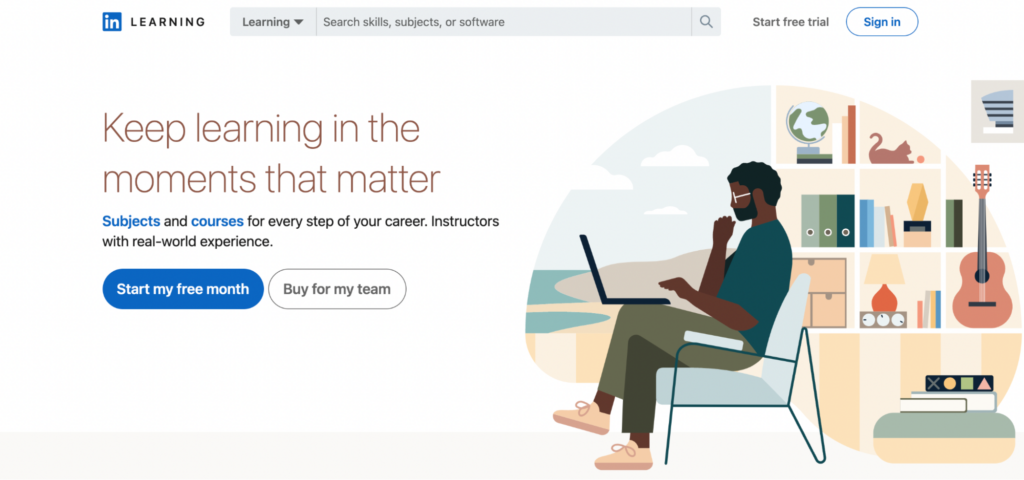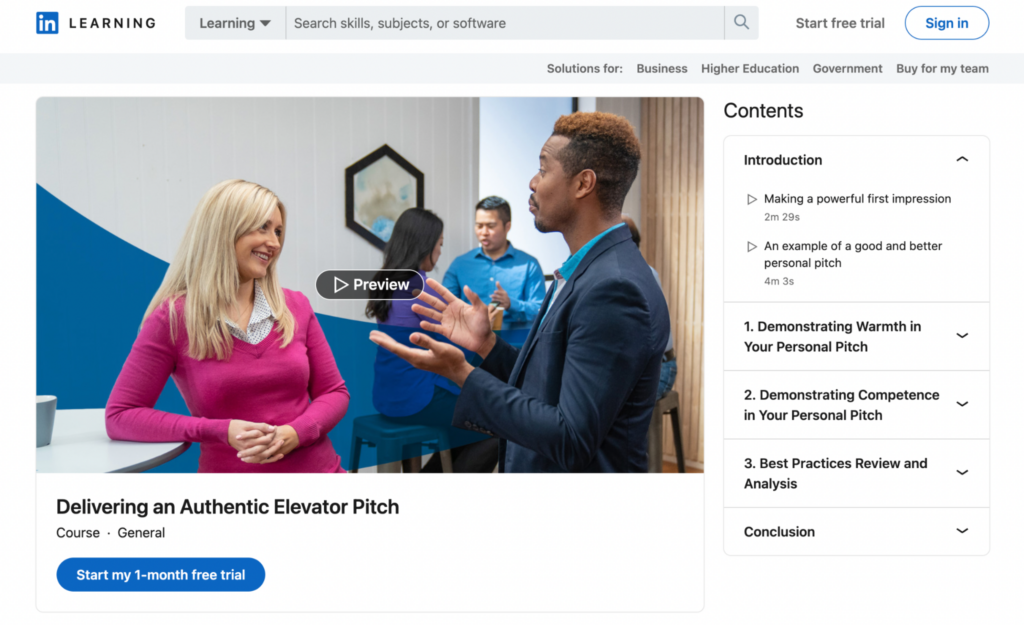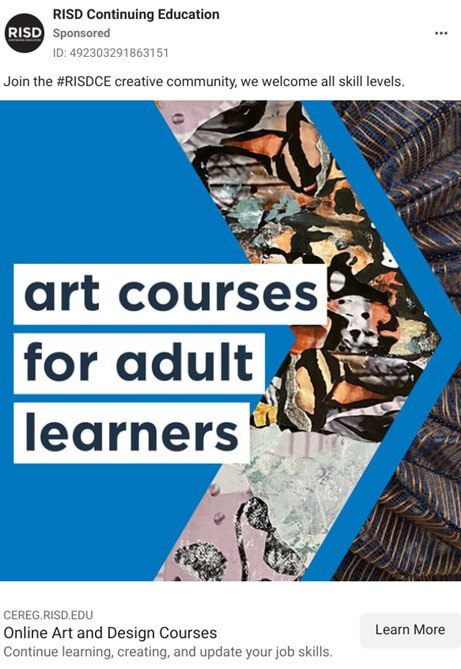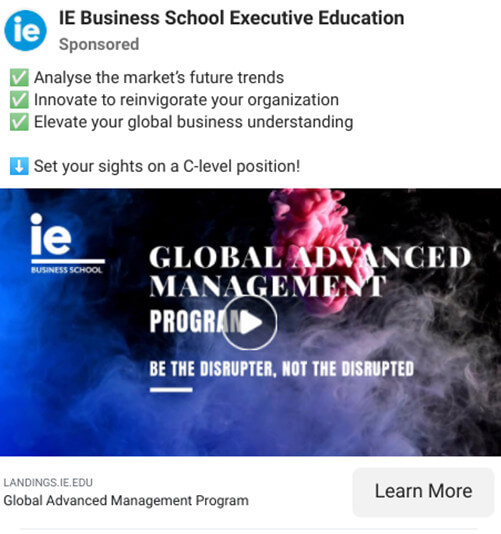
6 Executive Education Marketing Strategies to Attract More Students
Your target audience for executive and continuing education programs is using a variety of mediums, channels, and devices to learn about courses. This includes social media, search engines, landing pages, email, and more—from both mobile and desktop.
That’s why if you want to recruit the most qualified leads, your higher education marketing strategy must consist of optimizing each and every relevant channel, and providing a good user experience (UX) across every device.
To do this right, you need to center the digital customer experience and implement the right tactics.
In this blog post, we’ll look at the importance of putting the customer experience first in higher education marketing, along with the best practices marketers can apply to boost engagement and enrollment.
Table of contents
- Why your higher education digital marketing must center the customer experience
- 6 expert higher education marketing tips to help you expand awareness and drive conversions
- 1. Build landing pages that serve your function and align with your end goals
- 2. Leverage social media platforms to expand your reach
- 3. Use marketing analytics to personalize outreach and run strategic campaigns
- 4. Optimize your email marketing to boost CTR and increase enrollment
- 5. Partner with past and current students to tell compelling stories and boost social proof
- 6. Ensure your content marketing strategy is optimized for SEO
- Key takeaways
Why your higher education digital marketing must center the customer experience
An effective higher education marketing strategy starts by putting the user experience and the needs of participants first. Here’s why:
It personalizes each journey touchpoint
There are various touchpoints that each student goes through in their higher education journey. By focusing on the customer experience first, you can personalize each touchpoint to the student’s needs at every funnel stage.
Let’s say a prospective student is intrigued by your education website and fills out a form to gain more information about a course or program. From those answers, you’ll have valuable data that you can use to further engage them in a more targeted manner.
This may look like adding them to a unique email marketing segment based on their demographics, career area, location, and interests. With segmentation, you can skew the messaging in a way that’s compelling and aligns with their goals and motivations.
Continuing with our example, if you know the potential student is interested in your Digital Business and IT courses (based on their form-data), you can showcase messaging, images, and topics related to this track.
In doing so, you’ve built a data-driven, customer-centric experience that motivates them to learn more and ultimately convert.
It helps you generate qualified leads
The goal of lead generation isn’t to attract the most leads as possible. Instead, it’s to attract the right kind of leads—as in, the prospects most likely to enroll in a course.
Pursuing unqualified leads wastes precious time and money for higher education marketers. By understanding your ideal target students, such as their age group, goals, interests, and challenges, you can segment your marketing efforts to attract and nurture the best prospects.
For example, before MIT Sloan Executive Education (MSEE) collaborated with our marketing team at Smart Panda Labs to drive more participants to their programs, they had difficulty filling their pipeline with quality leads. The reason was that many of their prospect campaigns lacked strategy and proper segmentation.
Using tactics such as social advertising, we were able to help them target students based on relevant factors to their audience, such as demographics, interests, and firmographics. The result? They were able to generate thousands of qualified leads and a 111% increase to their database.
It builds an omnichannel experience
If you want to recruit more qualified leads, your marketing plan must consist of optimizing each and every relevant channel. A strategic omnichannel experience helps you reach your ideal audience where they are, in the right way, at the right time.
Putting time and effort into researching and understanding how your audience seeks information related to your offering (and in what manner) is a key part of centering the digital customer experience.
For example, if your qualified leads are finding you through paid ads served after a Google Search, make sure you are optimizing your ad campaigns to capture more of your target audience. This may involve:
- Researching paid search keywords to ensure you’re competing across several terms
- A/B testing headlines and copy for performance
- Running multiple ads simultaneously to improve ROI
This effort ultimately shows that you’re willing to go to your target audience and serve them the information they’re looking for, rather than making it difficult for them to find your programs (and subsequently struggle through a confusing UX to sign up for one).
Ultimately, an omnichannel approach boosts your reach and creates more opportunities to engage with students wherever they are.
It reduces friction in the digital user experience
Any friction on an education website can slow down or stop the progression of enrollment. By focusing on the user experience, you understand what the user goes through, which helps you identify sticking points preventing your website from reaching its conversion potential.
During our collaboration with MSEE, part of our agency’s strategy was to identify website bottlenecks or UX obstacles and find ways to improve them. One insight that we found interesting, for example, was that users who created an account on MSEE’s page were 1000x more likely to register.
As a result, we tested a new design on the initial registration page to reduce friction and push more users to create an account. The new design generated a 28% increase in new account creation.
6 Expert higher education marketing tips to help you expand awareness and drive conversions
Here are our expert tips on the best digital marketing strategies to drive more brand awareness and more students to education programs:
1. Build landing pages that serve your functions and align with your end goals
Your landing pages create the first impression that a visitor will have about your executive or continuing education programs. It’s where they learn more about your courses and offerings and determine whether it fits their career goals.
However, most landing pages perform poorly, with an average conversion rate of 2.35% across all industries. It’s why you want to optimize your higher education landing page strategically, so it serves your function and helps achieve your goals.
Here’s how you can create the perfect landing page for your programs in four steps:
- Identify your target audience: Who is your ideal student, and what motivates them to sign up for your program? By uncovering these details, you can then align your landing page’s language, imagery, and messaging with your customer persona.
- Provide clear information about the program: Your landing page must include everything the student needs to know about your program. Make sure to include vital information such as costs, location, and scheduling.
- Use engaging design: Your landing page needs an eye-catching design layout to maximize conversion. For an attractive landing page design, use a combination of high-quality graphics, photography, and video content.
- Make it responsive for mobile devices and tablets: People use various devices such as their smartphones or tablets to research potential educational programs. Make sure to make your landing page responsive, so it looks good on all devices.
Here is an excellent example of what a high-converting landing page looks like from LinkedIn Learning. The second that visitors land on the page, they can see that this platform is geared toward development-seeking professionals and managers who want course options for their teams. The design is simple and the text is easy to read. Importantly, visitors are segmented with two button options.

The individual course landing pages show what students will learn on the course, how long it will take, and feature extra information such as transcripts from the course, certificates upon completion and instructor information.

As a bonus, visitors can also check out a video about the course, engaging them with multimedia preferences.
2. Leverage social media platforms to expand your reach
Social media marketing is one of the most powerful tools for higher education institutions. It allows you to boost awareness around your education programs. For the best results, adopt both organic and paid reach.
Organic reach refers to any social media activity that doesn’t consist of paid promotion. Like posting on your Facebook page, live streaming a subject matter expertise (SME) discussion, or writing and sharing an article on LinkedIn.
On the other hand, paid social reach refers to any advertising that you launch on social platforms. It comes in a variety of formats, such as posts to display content in front of your target audience or sponsored ads.
The main benefit of paid reach is that you can personalize campaigns based on various factors, such as age, gender, and interests. It’s a simple and direct way of promoting your educational program in front of the right people at the right time.
Here’s an example of a paid ad from RISD Continuing Education. The ad uses engaging imagery and encourages their target audience (adult learners looking to start a career in the arts) to learn more about their education courses:
The ad includes a link to all the different art courses that RISD offers, such as 3D modeling, photography, and graphic design.
Here’s another excellent example from IE Business School Executive Education. The ad includes precise information on what students will be learning in their global advanced management program:
They include video content to make it more engaging and visually pleasing. This helps catch the attention of IE’s target audience (business executives) as they’re scrolling through their feed.
3. Use marketing analytics to personalize outreach and run strategic campaigns
Data should drive each marketing campaign you launch. By collecting and leveraging marketing analytics, you can run more strategic campaigns that personalize each step of the student journey.
For example, machine learning is one the best marketing tools available as it pulls from historical data and reports on which actions will increase conversion rates. Thus, it can remove any guesswork and catalyze you to make smarter, more informed decisions.
Let’s say that you have a subset of people interested in a blend of in-person and virtual learning. With machine learning, you can identify who these students are and target them with custom programs they can take advantage of.
Another benefit of using marketing analytics is that you can segment your audience based on students who converted vs. those who did not. You can then look at the insights for both groups and form a data-driven hypothesis on why certain students aren’t signing up for your course.
Say that you discover that students that don’t sign up are getting stuck in a loop on your website. Perhaps a heat mapping tool like SessionCam shows endless loops between two specific pages—and then they bounce.
Armed with this data, you can target the “did not sign up” because of a “website bottleneck” cohort with ads that lead them to a simplified version of your landing page.
Perhaps this copy has half the amount of information and is incredibly straightforward. It also combines the information from the two pages they were oscillating between and provides several CTAs that promote getting in touch to speak to a rep to learn more.
Once set up, monitor their site behavior to see if landing page conversions for this group increase. If so, you’re onto something. If not, A/B test with different copy to see if that makes a difference.
If that still doesn’t work, go back to the drawing board and see what (if anything) you missed. Perhaps the answer is to instead add a chatbot to your home page to help answer questions in real-time.
4. Optimize your email marketing to boost CTR and increase enrollment
Email is a staple tactic in every higher education marketing strategy and an excellent way to nurture leads. It also comes with a high ROI: for every dollar spent on email marketing, you generate a return of $44.
However, building a list of qualified leads for your continuing education programs is just the first step. You must also optimize your email marketing strategy in a way that engages prospects and drives more enrollment.
For example, segmentation plays a critical role as it ensures you’re consistently delivering the right message to the right person. Segment your emails based on factors such as course interest, demographics, and where the prospect is at in the application process.
Lack of proper segmentation was one of the reasons MSEE (from our example above) was struggling with retention. Their low CTR was a clear indicator that their emails weren’t driving students to take action.
By improving their email marketing with segmentation, MITSEE boosted their CTR on email communication by 21%. Their audience also got more exposure to additional courses from their institution, which instantly increased enrollment.
Another critical factor to successful email marketing is personalization and automation. This can be as simple as starting with automatically adding a {first name} tag to your email headlines: email subscribers are 26% more likely to open emails with personalized subject lines. Of course, the body copy should also speak to their needs and desires so that they are compelled to click through and ideally click a CTA. But you certainly shouldn’t be manually sending every email. Automated drip campaigns that trigger based on certain behaviors save you valuable time, and money.
5. Partner with past students to tell compelling stories and boost social proof
Your past students can become the best advocates for promoting your higher education programs. Hearing real-life success stories goes a long way in convincing potential students that they can benefit from your course as well.
In fact, a customer research project we helped manage for MSEE showed that 68% of prospective students said they read course reviews prior to making a decision.
Take this example from MSEE, where Steve Suarez, a past program participant, discusses his experience:
He touches on:
- Why he chose the course (“I found the content to be very engaging”);
- How he felt about his professors (“They were leaders in the fields”);
- The relevancy of the course work (“It mimics the challenges we face day to day”), and;
- How it’s helped him in the real world (“It allowed me and my fellow students to exchange ideas that we could then take by and apply to our organizations”).
In doing so, Mr. Suarez effectively:
- Gives his own perspective on the course material, which could help tip the scale for people on the fence
- Answers frequently asked questions that potential students may have (i.e. Is the course relevant to today’s business challenges?)
- Adds social proof to the credibility of the professors teaching the course
- Applies his experience to the real-world, which speaks to his return on investment
Here are some tips for collecting testimonials:
- Let past students speak freely. A testimonial that sounds scripted can be a red flag for your prospects. Always let the student speak their mind freely to make the testimonial sound natural.
- Keep it short. Student videos need to be straight to the point. Testimonials that are too long may discourage others from watching the whole video. The example above is one minute and eight seconds long. Concise, to the point, short, and sweet.
- Review the video with your marketing department. Each testimonial must align with the mission and vision of your program. Before publishing the video online, make sure that your marketing department can provide their feedback.
After collecting feedback, it’s time to share those stories in a compelling way that inspires prospects to enroll. The best ways to share your testimonials include:
- Display them across your website. Including testimonials across your website instantly boosts your social proof when prospective students visit. Include them on your homepage and program pages to make the biggest impact.
- Turn stories into blog posts. Creating content on your website allows you to rank on search engines and improve your online presence. You can re-repurpose user stories into articles to publish on your school blog to make topic ideation more effortless while still maintaining a consistent presence.
- Share the testimonials on social media. Social platforms are perfect for sharing your past student stories. You can either share the whole video on your social posts or publish short quotes from the interviews.
6. Ensure your content marketing strategy is optimized for SEO
Search engine optimization (SEO) ensures that your continuing education programs are ranking on search engines. This is key, as many potential students are doing their research online. The higher your ranking, the more likely students are to discover your courses and enroll in your program.
Here’s a checklist you can follow to make sure that you’re optimizing your content marketing strategy for SEO rankings:
- Use Google Search to identify common search terms. Effective content marketing starts by identifying the right search keywords to target. Using Google’s search recommendations allows you to understand the questions and queries ideal students have around your continuing education programs so that you can compile a list of top terms for future content.
- Publish content regularly. As the saying goes, content is king, so make sure to be consistent with publishing your blog posts. If possible, post at least one blog post per week to keep engagement steady.
- Get backlinks from high-authority websites. Backlinks prove to search engines that the content on your website is valuable. An effective content marketing tactic to get backlinks is guest posting, which helps get backlinks to your own website in exchange for an article.
- Watch out for duplicate content. Duplicate content harms your visibility on search engines since it confuses Google on which of the identical pages it should rank first. Always stick with having original content throughout your website and remove any repeated text.
- Remove any broken links. Make sure your blog posts aren’t linked to broken pages on your website as that will hurt SEO.
- Optimize your coherent page speed. Google has a user-first approach to its search engine, and its algorithm favors websites with high load speed. To get your site to rank, make sure to resolve any speed issues that negatively impact your page performance.
Key takeaways
As with any marketing campaign, the best place to start is by understanding your digital customer experience. This way, you can tailor your outreach and messaging to your target audience and ensure that your entire customer journey is tailored to their needs, as well as the channels they frequent.
Attracting qualified students consists of a combination of the right higher ed marketing tactics and segmentation. This way, you can personalize each step of the prospective student’s journey, drive qualified leads, and ultimately boost enrollment to your continuing education programs.
READY TO PROVIDE A BETTER POST-CLICK EXPERIENCE?
Get insights and tips to drive more business from less ad spend, more profit from less cost, and more customer value from less churn.

